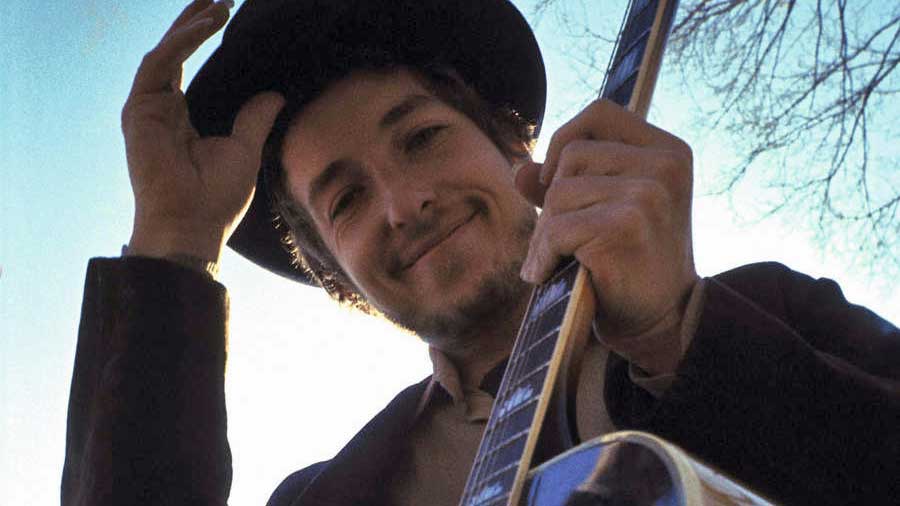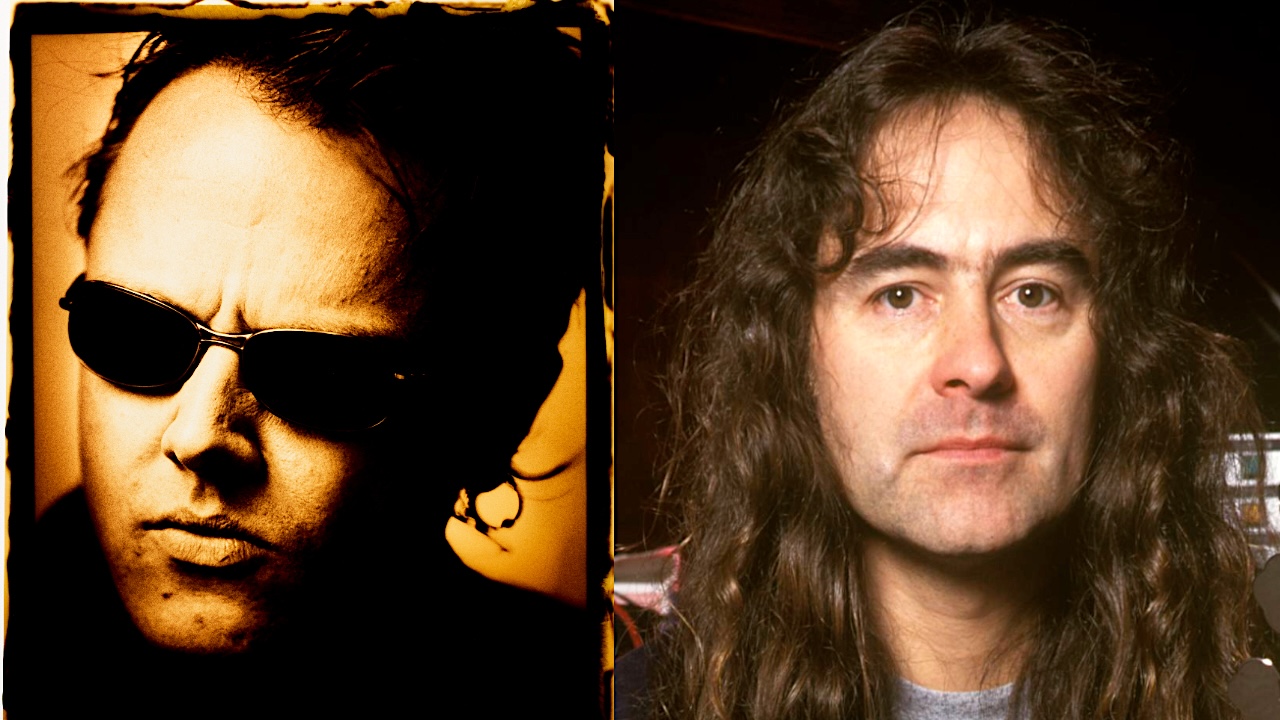"If I was me, I’d cover my songs too" - the story of rock's enduring love affair with Bob Dylan
From The Byrds to Guns N’ Roses via Jimi Hendrix’s unimpeachable All Along The Watchtower, we look at the Bob Dylan covers where the students eclipsed the master

All roads lead back to Bob Dylan. On countless albums since 1962, across any genre, you can find that hallowed surname in the credits. Crunch the numbers – his catalogue of 600-plus songs is eclipsed by more than 6000 covers – and you’ll start to grasp why the Universal Music Group paid the 80-year-old songwriter a reported £225 million for his publishing rights in 2020.
After all, to own Dylan’s originals is not a goldmine to be sniffed at – but to profit from his branches and tributaries is practically a royalty statement with no end. Even beyond his towering influence, that roll-call of cover versions ensures that Dylan, then and now, is everywhere: a common strand of DNA that courses through Guns N’ Roses, Sonic Youth and the Grateful Dead, sprawls across the degrees of separation between XTC, Cheap Trick and Fairport Convention.
“My old songs, they’ve got something,” Dylan told Rolling Stone in 2006. “I think my songs have been covered maybe not as much as White Christmas or Stardust, but there’s a list of over five thousand recordings. That’s a lot of people covering your songs. They must have something. If I was me, I’d cover my songs too.”
Almost from the moment Dylan inked his first publishing deal – brokered in 1962 by Lou Levy of Leeds Music Publishing – the Dylan cover has been part of the furniture. Back then, in the early 60s, within three weeks of Dylan releasing his original Blowin’ In The Wind, Peter, Paul And Mary had covered it, adding their own harmony-draped (if slightly twee) thumbprint.
Ever since, the production line has run in parallel with Dylan’s career: fast-forward to 2021 and Chrissie Hynde found sufficient juice in his songbook to fuel her album Standing In The Doorway: Chrissie Hynde Sings Bob Dylan, with the broken-down jangle of Sweetheart Like You arguably topping Dylan’s original single from 1983’s Infidels.
“He’s Bob Dylan,” shrugged the Pretenders leader, simply, of her rationale for the project, as if covering the master was a formality that every artist must someday address.
To drill deeper, though, what is it that brings pan-generational, genre-crossing musicians to Dylan’s catalogue? One theory is that the veteran songwriter has amassed such a vast oeuvre, offering such shifting moods of material – and lyrics that can be waspish, lovelorn, satirical or sweet – that there’s something for every stripe of band or artist to bite off and chew.
Sign up below to get the latest from Classic Rock, plus exclusive special offers, direct to your inbox!
As such, metallers Ministry were able to transform the cowpoke country-lilt seduction of Lay Lady Lay into a caustic industrial crunk, while polemicists Rage Against The Machine forged fat funk-metal rom the anti-commodification diatribe of Maggie’s Farm.
“The riffs on Maggie’s Farm were written as a cool Rage Against the Machine riff or jam, and it later had the Dylan lyrics applied to it,” Tom Morello said in Speakeasy (the guitarist also told Forbes magazine that he considered Dylan’s The Times They Are A-Changin’ “the heaviest record I’d ever heard in my life”).
Another argument is that Dylan’s originals often feel more like roadmaps than final productions; half-daubed canvasses that leave cover artists a room for manoeuvre that, say, Queen’s Bohemian Rhapsody or Led Zeppelin’s Kashmir would not. Nor is Dylan such a vocal or instrumental force that his originals feel unassailable – as they might with a Robert Plant or Eddie Van Halen – with Dylan admitting the germ of the song matters more than its execution.
“I can’t say that I’ve made any great-sounding records,” he reflected to USA Today in 1997. “A lot of the older songs were just blueprints for what I’d play later on the stage… There have been other artists who have recorded my songs and shown me the way the song should go.”
It should be noted that the majority of Dylan covers are fodder: a means of bulking up a live set, conferring credibility (for younger artists), or putting product on shelves during a songwriting drought (for older ones). But it’s remarkable, too, how regularly Dylan has been bested by the covers that followed, twisting his templates and putting the heat under his raw materials.
Most would agree that the first stone-cold-classic Dylan cover arrived in April 1965. Roger McGuinn of The Byrds had bought a 12-string Rickenbacker electric after seeing George Harrison play one in the Beatles film A Hard Day’s Night. But it was Dylan’s Mr. Tambourine Man that gave McGuinn his jump-off: just a month after Dylan’s release, The Byrds added a jingle-jangle intro riff and a tumble of harmonies to their version that instantly eclipsed the original’s prosaic strum. Even today, that opening flourish evokes the flower-fresh rising of the sixties counter-culture, perhaps better than any other instrumental break.
“To take a Dylan song and put electric guitars on it was not heard of at that point,” McGuinn told this writer. “Mr. Tambourine Man was probably the first electric folk. But we had to shorten the song. It was about four minutes long in its original form – too long for radio – and it was also in two/four time. So we changed the time signature to four/ four and shortened it down to one verse… Then I picked that little intro on the front with my Rickenbacker, and the same figure at the end. When we listened back to Mr. Tambourine Man in the studio, it sounded really wonderful, like: ‘Wow, did we do that?’”
Across the pond in the same period, The Beatles were likewise unabashed Dylan acolytes. Lennon claimed his own songs like I’m A Loser and You’ve Got To Hide Your Love Away were open tributes; the unravelling Beatles jammed on Dylan songs such as Like A Rolling Stone and I Want You during their Let It Be sessions in January ’69.
But it’s surely the blissful swoop of If Not For You, on George Harrison’s 1970 solo album All Things Must Pass – taught to the Harrison just days earlier by Dylan – that stands as the sweetest recorded cover mustered between the four Beatles. The magnanimous Harrison would never have claimed as much, but by comparison his old friend’s skin-and-bones forerunner suddenly sounded brittle and stunted.
Dylan’s catalogue was not such virgin territory by the time Guns N’ Roses rose from the fleshpits of mid-80s LA, and his gospel-draped Knockin’ On Heaven’s Door had already been retooled with a reggae chop by Eric Clapton in 1975. Yet neither Dylan nor Clapton could touch the factor that elevated the GN’R take on 1991’s Use Your Illusion II: a molten Slash solo played on instinct.
“It was an amazing take,” the guitarist wrote in his autobiography of the searing lead break. “I just ran in there with my girlfriend and some friends in tow, picked up the guitar and really let the solo sing. I turned the tone down on the bass pickup, I locked in and let it scream.”
It wouldn’t be the last time that Dylan would have his own songs wrenched away from him. Even a cursory excavation of more modern covers finds such spellbinding takes as Eddie Vedder’s intense Masters Of War (at 1992’s 30th Anniversary Concert Celebration of Dylan), Jeff Buckley’s edge-of-tears Just Like A Woman and a dying Gregg Allman’s hard-to-bear Going Going Gone, with that gut-punch lyric ‘I’m closing the book on the pages and the text/And I don’t really care what happens next…’.
In the post-millennium, Jack White has been arguably the most effective standard bearer, his White Stripes often pulling out a clatter-and-clang live reading of Desire’s fiddle-decorated highlight Isis, in their early years, and bringing a bleak spaghetti-western drama to One More Cup Of Coffee on their self-titled debut album. The tip of the hat went both ways, too: in a heartening flash of synergy, White was later called upon to perform his own Ball And Biscuit with Dylan live in Detroit. “It’s not lost on me that he played one of my songs, not the other way around,” White guitarist told Speakeasy.
And yet, almost unavoidably, it’s a cover of All Along The Watchtower that looms over everything else. “It was a small song of mine that nobody paid any attention to,” a veteran Dylan once shrugged.
In the dying days of ’67, Jimi Hendrix was dropping the needle, again and again, on this unloved corner of Dylan’s new John Wesley Harding album, hearing something more in All Along The Watchtower than the rudimentary three-chord strum it seemed to others.
Famously, Hendrix was a Dylan fanatic. But he was something more as well; the guitarist felt a deep kinship that meant he considered the two songwriters’ oeuvres to be entwined, All Along The Watchtower being another of the Dylan compositions so on his wavelength that “I feel like I wrote them myself”. Hendrix had been spotted around town with a copy of the John Wesley Harding album under his arm, and had become fixated on the fourth track (“I remember Jimi said to me: ‘That’s the coolest song’,” Traffic’s Dave Mason told Guitar World).
By January 1968 – just a month after Dylan’s original had come out – Jimi was ready to build his own Watchtower, albeit within the constraints of Olympic Studios’ primitive four-track tape machine, and having squeezed out bassist Noel Redding by choosing to overdub the bass himself.
“That pissed off Noel no end,” recalled engineer Eddie Kramer, “and off he would go to the pub.” Redding remembered the altercation differently: “That’s when we were having a few problems within the band already. I said I didn’t like the tune, I prefer Dylan’s version. I used to get to the studio at six, and Hendrix wouldn’t turn up until three in the morning. We were expected to sit around and wait for him. Which I wasn’t prepared to do.”
Experience drummer Mitch Mitchell might have been seen to scratch his head as Hendrix showed him how to turn around the intro beat. Likewise, across the studio floor, a guesting Mason – no slouch on guitar himself – struggled with a 12-string rhythm part that Kramer noted “always buggers people’s minds up”.
The session crawled on, clocking upwards of 27 takes. At least a couple of those misfires might have been attributed to Brian Jones, who fell through the door of Olympic, paralytically drunk, and commandeered the piano.
“Jimi could never say no to his mates, and Brian was so sweet,” Kramer groaned in Sound On Sound. “He came in and said: ‘Oh, let me play.’ It was take twenty-one, and we could just hear ‘clang, clang, clang, clang…’ It was all bloody horrible and out of time. Jimi said: ‘Uh, I don’t think so.’ Brian was gone after two takes. He practically fell on the floor in the control room. Dear Brian…”
But the gathering reels of recording tape were also testament to an interpretation that was evolving at rapid pace, from a lighter and bass-free early take with Hendrix on acoustic, to the glowering, heavily layered studio collage of legend. That summer at New York’s Record Plant, Hendrix went down the rabbit hole again for Watchtower’s vocal and percussion, benefitting from the quantum leap of the studio’s 16-track technology. Perhaps he was never truly satisfied with Watchtower: “I think I hear it a little bit differently,” he kept saying, according to engineer Tony Bongiovi, as overdubs came and went.
But Hendrix came back out with a masterpiece. The Dylan original had hinted at impending apocalypse, with its doomy imagery of growling wildcats, howling winds and sinister horsemen. Yet there is a limit to the foreboding that can be summoned with an acoustic and reedy harmonica. As Queen’s Roger Taylor once told this writer: “The Dylan original wouldn’t necessarily be the one I’d listen to… it’s pretty plain.”
Hendrix’s interpretation left no doubt as to the intended mood. Opening with a staccato clang of guitar and drums, followed by his ‘woop-woop-woop’ string bends that evoked a car alarm, the sonic impression was of a world spinning off its axis into darkness, with a little of the same gathering-storm feel of the Stones’ Gimme Shelter.
Little wonder that decades later, when Tom Hanks’s character patrols the jungle hellscape of Vietnam in Forrest Gump, it’s Hendrix’s version of Watchtower that soundtracks the scene. Hendrix, by his own admission, couldn’t match Dylan for lyrics (“I could never write the kind of words he does”). But nobody – then or now – could have touched what might be the career-best showcase of Jimi’s guitar playing.
Supported by a production bed that takes in everything from looping to backwards tape effects, the solos that punctuate the song remain extraordinary, Hendrix slipping from wah-wah-soaked flourishes, to haunted Hawaiian swoons, to the trilling single-note outro.
Kramer remembers Jimi using a Gibson Flying V, and studiously working out his path through the solo in advance. More spontaneous was the way he grabbed knives, beer bottles and, finally, a Zippo lighter for the slide work. “There were a lot of devices that he used,” the engineer reflected in Total Guitar. “A Zippo was one of them, but he was known sometimes to use his rings.”
Upon its release in September 1968 as the leadoff single from Electric Ladyland, All Along The Watchtower was not so much a cover as a song rewritten from the ground up. To hear it was to almost forget the existence of Dylan’s original, which now seemed the faintest of signposts. It reached No.5 in the UK. In the US it reached No.20 and was Hendrix’s breakthrough success in his homeland.
To date it has been streamed on Spotify over 500 million times. As for Dylan, he was gracious, scarcely believing what had come from his original. “It overwhelmed me, really,” he said. “He had such talent, he could find things inside a song and vigorously develop them. He found things that other people wouldn’t think of finding in there. He probably improved upon it by the spaces he was using. I took licence from his version, actually, and continue to do it to this day.”
Watchtower might stand as the greatest Dylan cover to date, but the gauntlet is still there to be picked up – and perhaps music fans and record business bean-counters alike are banking on it.
“I have no doubt that decades, even centuries from now, the words and music of Bob Dylan will continue to be sung, played and cherished everywhere,” said Universal Music Group Chairman Sir Lucian Grange as he toasted that landmark publishing deal. And he was surely referring as much to the interpreters to come as to the originator himself. As he forges into his eighties, there is a growing realisation that Bob Dylan is not immortal. His songbook, however, just might be.
Henry Yates has been a freelance journalist since 2002 and written about music for titles including The Guardian, The Telegraph, NME, Classic Rock, Guitarist, Total Guitar and Metal Hammer. He is the author of Walter Trout's official biography, Rescued From Reality, a music pundit on Times Radio and BBC TV, and an interviewer who has spoken to Brian May, Jimmy Page, Ozzy Osbourne, Ronnie Wood, Dave Grohl, Marilyn Manson, Kiefer Sutherland and many more.

